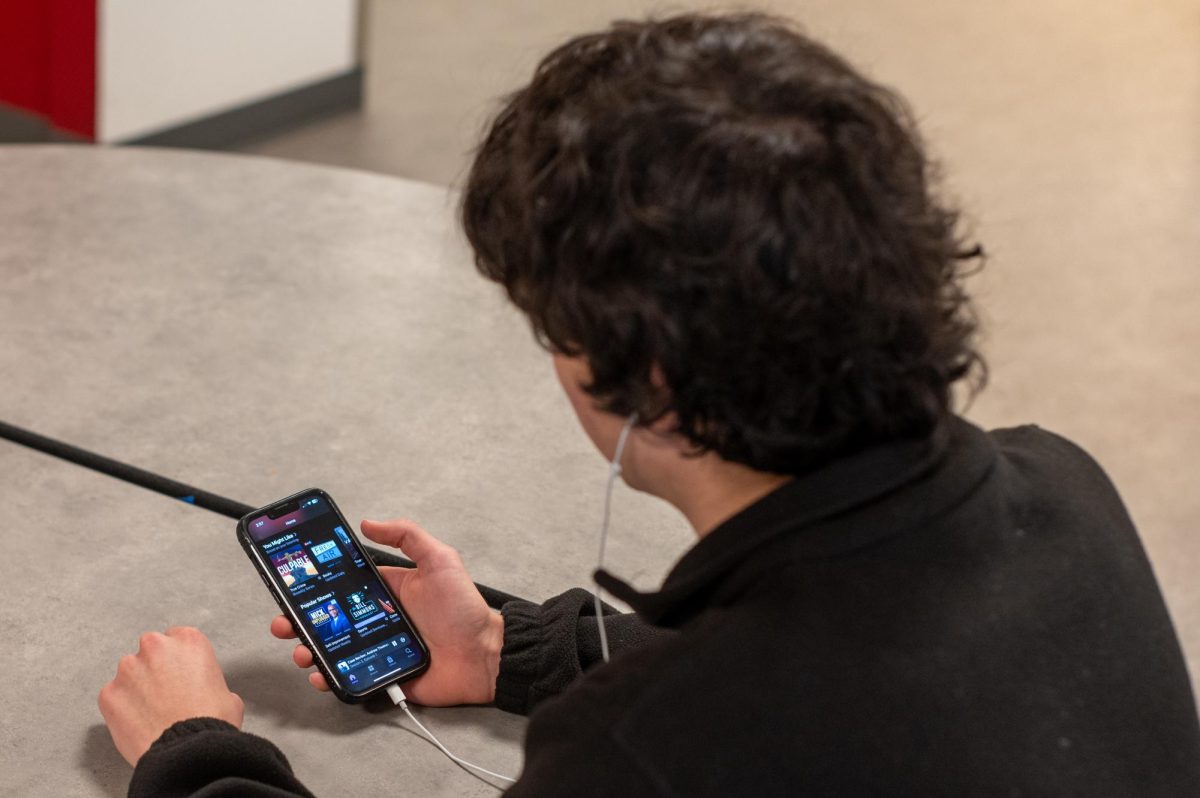Standing in front of his mirror every morning, junior Mateo Nacu carefully goes through each step of his skin care regimen, cleansing, toning and moisturizing his face with dedication. With each layer of skincare ointment applied, Mateo isn’t just tending to his complexion. He’s following the philosophy of looksmaxxing.
Originating on TikTok as an umbrella term for popular ways of physical self improvement, looksmaxxing has captured a global audience with its promise of improving one’s physical features. Looksmaxxing first developed after the increased popularity in “mewing,” a way in which one could alter their face shape and achieve a square jawline through holding their tongue toward the top of their mouth while clenching their jaw. Mewing was created in the 1990s by Dr. John Mew. After its rediscovery in 2019, the term quickly gained popularity through influencers on social media platforms. Despite its popularity on social media, there is little to no scientific evidence proving the effectiveness of mewing.
As mewing increased in popularity, multiple methods of improving one’s appearance began surfacing until the umbrella term looksmaxxing began taking shape.
Sophomore Spencer Davis first came across the term on TikTok, posted by a creator named Dillon Latham, an influencer with 1.4 million followers whose media is targeted toward methods of looksmaxing in young men.
Despite the stigma of negative body image issues and insecurities surrounding the term, Spencer sees looksmaxing as something that improves confidence and self-esteem, similar to working out in.
“It’s all about self-improvement and building confidence in yourself,” Spencer said. “Just like going to the gym, people conform to negative stereotypes, suggesting that all looksmaxxers are toxic and create more insecurities.”
Spencer also uses a popular skincare item called a gua sha. This traditional Chinese medicinal practice is used to improve blood flow. The smooth, jade rock is rubbed on the skin in long strokes and promotes lymphatic drainage. Spencer recommends this item to others looking to improve their facial features.
Besides looksmaxxing’s focus on jawline improvement, Mateo finds that skincare plays a significant role in looksmaxxing.
“I’ve found that skincare is also a large part of the looksmaxxing we see on TikTok,” Mateo said. “I think it’s good for influencers to help others with self improvement.”
Despite Mateo’s appreciation of the impact looksmaxxing has had on the younger generation, he finds that influencers have begun shifting their content toward promotions and advertisements.
“A lot of influencers have started posting ads and links to their lessons or skincare products,” Mateo said. “It kind of changed the way I looked at the trend because when it’s all ads you don’t know who you can trust and who is doing it for money.”
Despite the trend’s basic sentiment of genuine physical improvement, for some, it has become a joke. Ninth grader Sulei Sufi finds that the term has become more satirical for him and his friends.
“Looksmaxxing is mostly a new joke you can see on social media,” Sulei said. “I saw the trend mostly on TikTok and Instagram.”
Sulei’s participation in the trend goes beyond social media.
“I mostly joke around with my friends about the term,” Sulei said. “Sometimes I will flex my jawline as a joke. I definitely see it as more of a joke than anything serious.”
As he prepares to go to bed, Mateo concludes his day with his nighttime skincare routine. After washing his face and applying his nighttime skincare, Mateo opens TikTok again as he goes to bed, learning new methods and techniques about how to self-improve.


























































